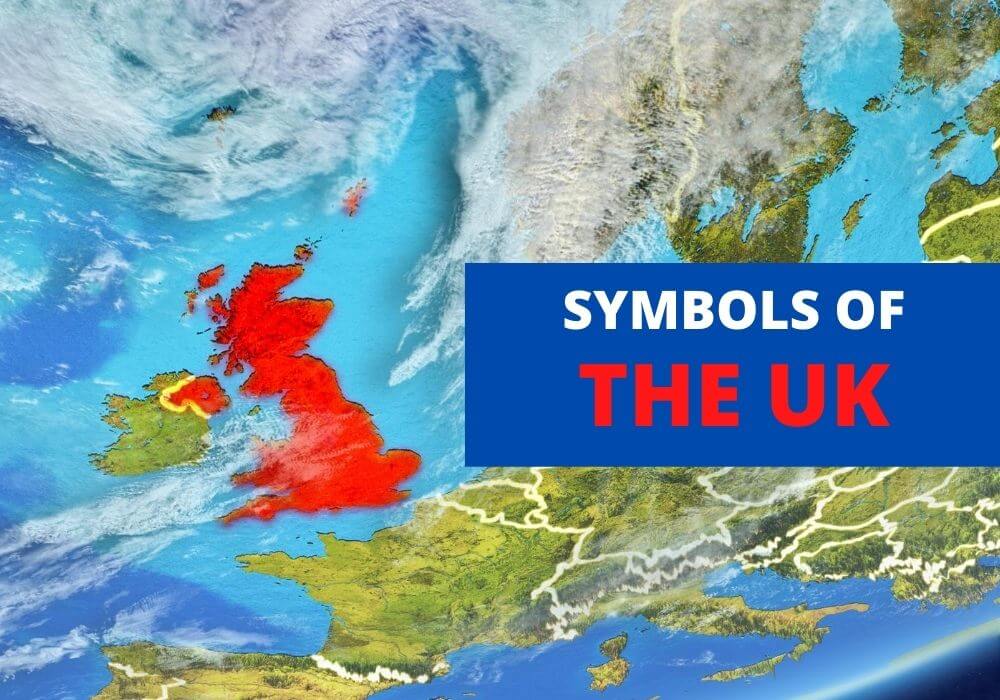
Table of Contents
The United Kingdom is a sovereign state consisting of the island of Great Britain (England, Scotland and Wales) and Northern Ireland. Each of these four individual countries have their own national flags and symbols, some more obscure than others.
In this article, we’re going to take a look at some official symbols of each of these countries, starting with the national flag of Great Britain which represents the entire UK.
The National Flag of the United Kingdom
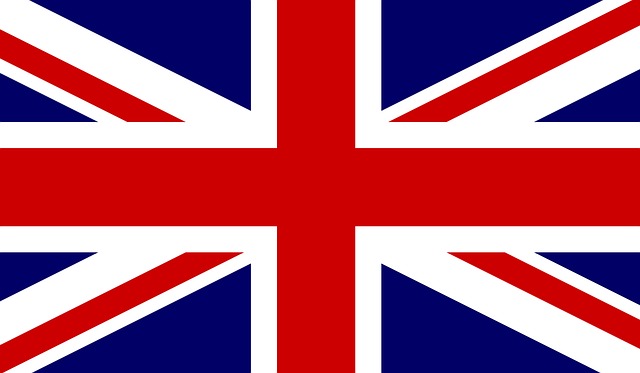
This is also known as the King’s Colors, the British Flag, the Union Flag, and the Union Jack. The original design was created and used from 1707 to 1801 on the ships sailing the high seas. During this time it was named the national flag of the United Kingdom. The original flag consisted of two crosses: the Saltire of St. Andrew, the patron saint of Scotland, with the red cross of St. George (patron saint of England) superimposed on it.
In 1801, the United Kingdom of Great Britain and Ireland was created, and the official use of this flag was discontinued. The design was then altered, with St. Patrick’s flag added to it and thus the present-day Union Flag was born. Although Wales is also a part of the United Kingdom, there is no symbol that represents it on the British flag.
The Coat of Arms
The coat of arms of the United Kingdom serves as a basis for the official flag of the monarch, known as the Royal Standard. An English lion is featured on the left side of a center shield and on the right is the Unicorn of Scotland, both animals holding it up.
The shield is divided into four quadrants, two with three gold lions from England, a red lion rampant representing Scotland and the gold harp representing Ireland. The crown can also be seen resting on the shield and its crest, helm and mantling isn’t quite visible. At the bottom is the phrase ‘Dieu et mon Droit’ which in French means ‘God and my right’.
The complete version of the coat of arms is only used by the Queen who has a separate version of it for use in Scotland, giving the elements of Scotland the pride of place.
UK Symbols: Scotland
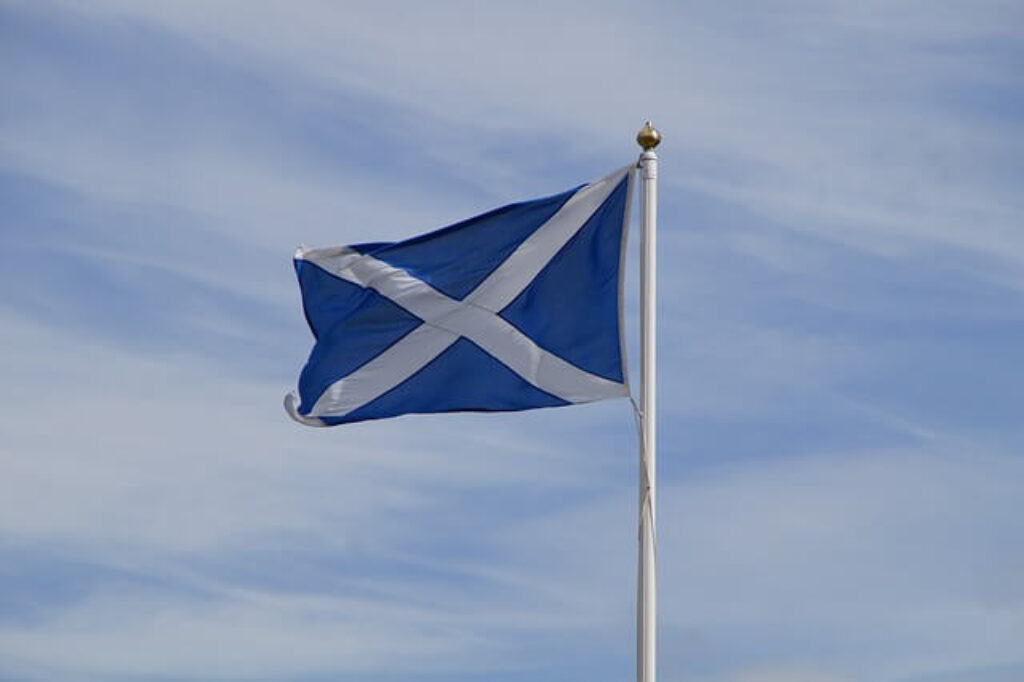
The national symbols of Scotland have many legends and myths surrounding them. One of the most iconic Scottish symbols is the thistle, which is seen almost everywhere adorning banknotes, whiskey glasses, broadswords and is even found on the tombstone of Mary Queen of Scots. It’s said that the thistle was chosen as the national flower of Scotland after it helped the Scots drive the Norse army from their lands.
The national flag of Scotland, known as the Saltire, consists of a huge white cross superimposed on a blue field, the same shape as the cross on which St. Andrews was crucified. It’s said to be one of the oldest flags in the world, dating as far back to the 12th century.
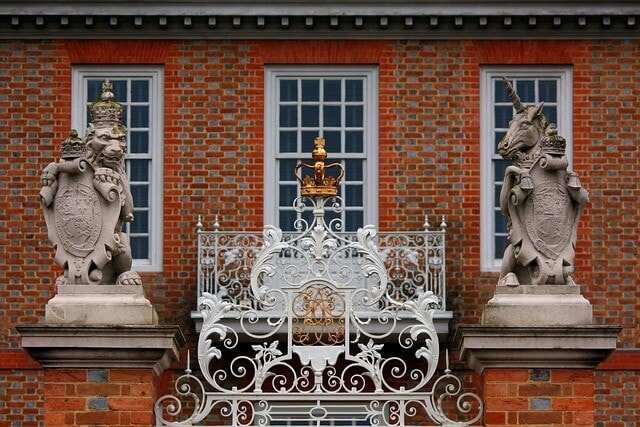
The Lion Rampant is the royal banner of Scotland, first used by Alexander II as a royal emblem of the country. A red lion defacing a yellow background, the banner represents Scotland’s history and legally belongs to the Royal Family.
The Unicorn is another official symbol of Scotland commonly seen everywhere in the country, especially wherever there’s a mercat cross. It symbolizes innocence, purity, power and masculinity and is also featured on the Scottish coat of arms.
UK Symbols: Wales
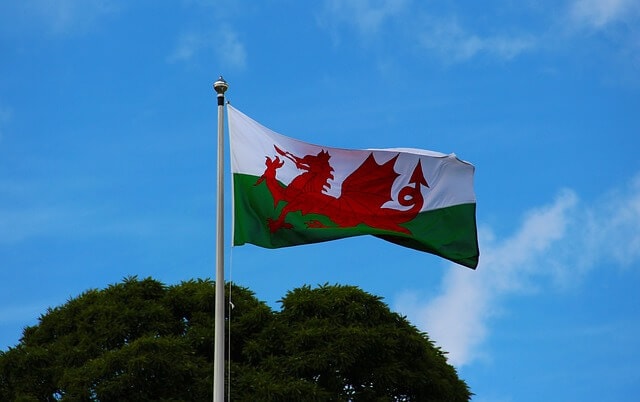
The history of Wales is unique and can be seen clearly in their national symbols. Like Scotland, Wales too has a mythical creature as its national animal. Adopted in the 5th century, the Red Dragon is featured on a background of white and green, an important element on the national flag of the country. It symbolizes the power and authority of Welsh kings and is a well-known flag that’s flow from all the government buildings in Wales.
Another symbol associated with Wales is the leek – the vegetable. In the past, leeks were used for medicinal purposes including strengthening immunity and easing pain of childbirth but it was most helpful on the battlefield. The Welsh soldiers each wore a leek in their helmets so that they could easily identify each other. After gaining victory, it became a national symbol of Wales.
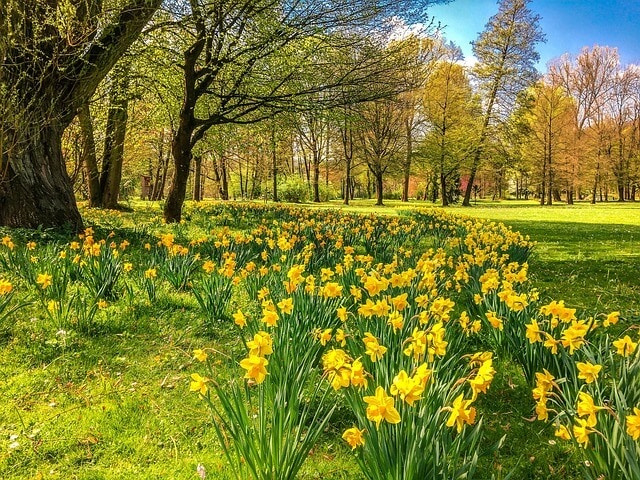
The Daffodil flower first became associated with Wales in the 19th century and later in the early 20th century it became increasingly popular especially among women. In 1911, the Welsh prime minister, David George, wore the daffodil on St. David’s day and also used it in ceremonies after which it became an official symbol of the country.
Wales has many natural symbols that hint at its beautiful landscapes, flora and fauna. One such symbol is the Sessile oak, a huge, deciduous tree which grows up to 40 m tall and is an unofficial emblem of Wales. This tree is revered by the Welsh due to its economic and ecological importance. Its timber is used for buildings, furniture and ships and is said to give a particular flavour to wine and certain spirits. This is one of the main reasons why it’s commonly used for cask- and barrel-making as well.
UK Symbols: Ireland
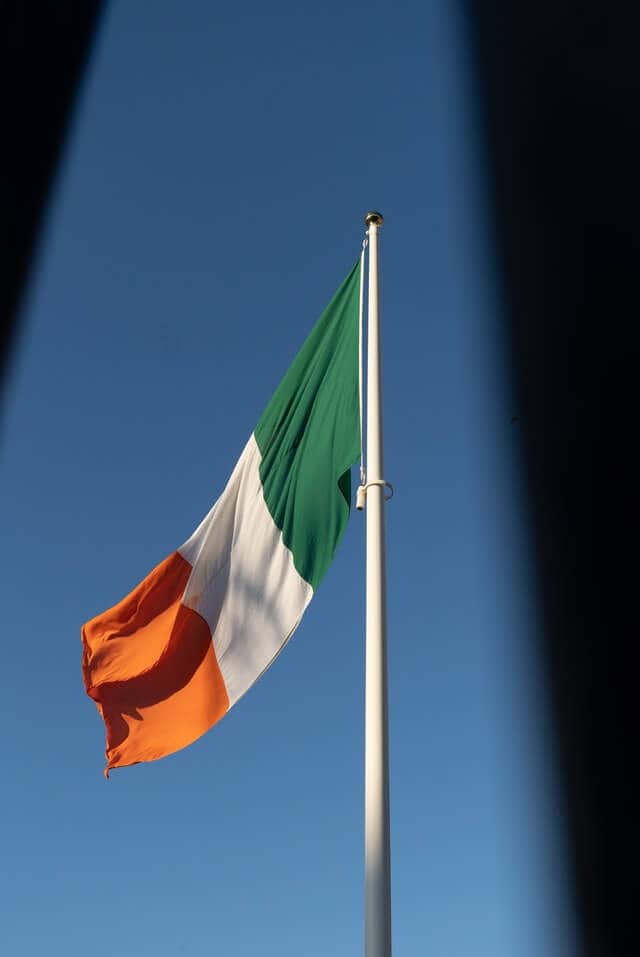
Ireland is a country rich in culture and history with several unique symbols that are quite well known around the world. As far as Irish symbols are concerned, the shamrock a clover-like plant with three lobed leaves, is likely one of the most prolific. It became the country’s national plant in 1726 and has continued to be ever since.
Before the shamrock became the national symbol of Ireland, it was known as the symbol of St. Patrick. According to the legends and myths, after St. Patrick banished the snakes from Ireland, he would tell stories to the pagans about the Holy Trinity using the 3 leaves of the Shamrock, each one representing the ‘Father, the Son and the Holy Spirit’. As Irishmen began to use the shamrock as their unofficial emblem, its green color became known as ‘Irish green’ to distinguish itself from the blue of the old Ireland ruled by Britain.
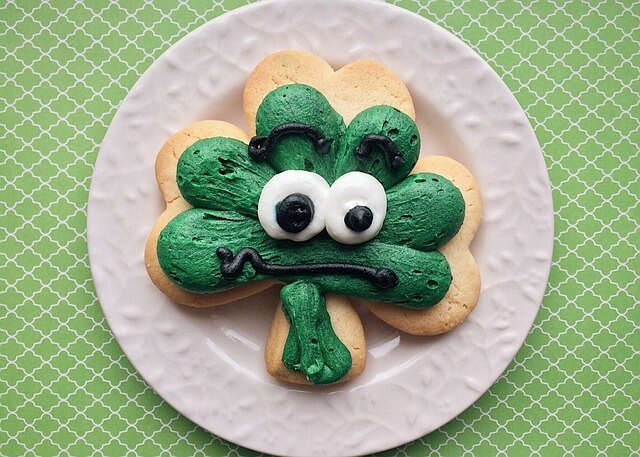
Another lesser-known symbol of Ireland is the Red Hand on the flag of Ulster, red in color and opened with fingers pointing upward and palm facing forwards. Legend has it that any man who was the first to place his hand on the soil of Ulster would have rights to claim the land and as a result, thousands of warriors began rushing to be the first to do so. A clever warrior in the back of the group cut off his own hand, throwing it over everyone else and it landed on the soil automatically giving him the rights to the land. Macabre – yes, but interesting, nevertheless.
A national symbol of Ireland, the Irish harp has an association with the people of Ireland that goes back to the 1500s. It was chosen by Henry VIII as the national symbol of the country and signifies power and authority of Kings. Though it’s not very well known as an unofficial symbol of Ireland, it’s actually one of the most important symbols in the Irish culture.
The leprechaun is one of the most famous Irish symbols in the world, known for hoarding gold and bringing luck to anyone who catches them. It looks like a little old man with a cocked hat and leather apron and is also known to be extremely grumpy. According to the stories, catching a leprechaun means you get three wishes, just like the genie in Aladdin.
UK Symbols: England
While Wales and Scotland both have mythical creatures as the national symbols sported on their flags along with vegetables or flowers, England’s symbols are quite different and their origin is clear and easy to understand.
In England, the House of Lancaster and the House of York both have roses as their national emblems, the Tudor Rose and the White Rose respectively. From 1455-1485, when the Civil War broke out, it became famous as the ‘War of the Roses’ since it was between the two houses. Later, the houses were unified when Henry VII became the King who married Elizabeth of York. He placed the white rose from the House of York in the red rose of the House of Lancaster and thus, the Tudor Rose (now known as the ‘Flower of England’) was created.
Throughout the history of England, lions have traditionally symbolized nobility, strength, royalty, power and valour and have been used on the heraldic arms for many years. They portrayed how the English Kings wished to be seen: as strong and fearless. The most well-known example would be Richard I of England, also known as ‘Richard the Lionheart’, who became famous for his many victories on the battlefield.
During the 12th century (the time of the Crusades), the Three Lions Crest, featuring three yellow lions on a red shield, was an extremely powerful symbol of the English Throne. Henry I, also known as the ‘Lion of England’ used the image of a lion on one of his banners as a way of motivating and inspiring his troops as they went forward into battle. He married Adeliza of Louvain, commemorating the event by adding another lion (from Adeliza’s family crest) to the banner. In 1154, Henry II married Eleanor of Aquitaine and she, too, had a lion on her crest which was added to the symbol. The image of the shield with three lions is now an important symbol in English heraldry.
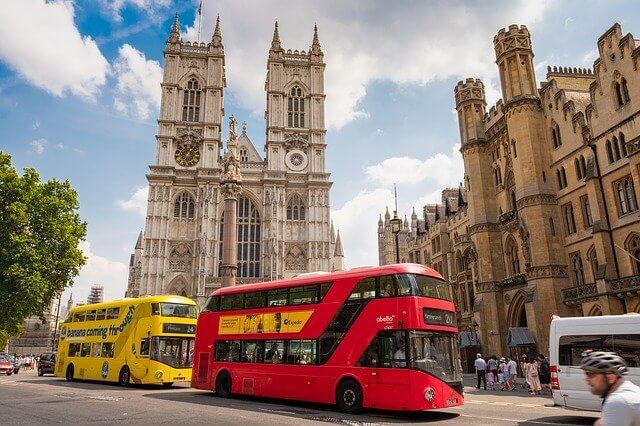
In 1847, the double-decker bus became an iconic symbol of England, dominating English transport for centuries. Designed by London Transport with a traditional and ultra-modern touch, the bus first went into service in 1956. In 2005, the double decker buses were taken out of service but there was a public outcry since the Londoners felt that they’d lost a valuable official icon. Now, the red double-decker is often converted into camping homes, mobile cafes and even into holiday homes instead of being used for regular transport service.
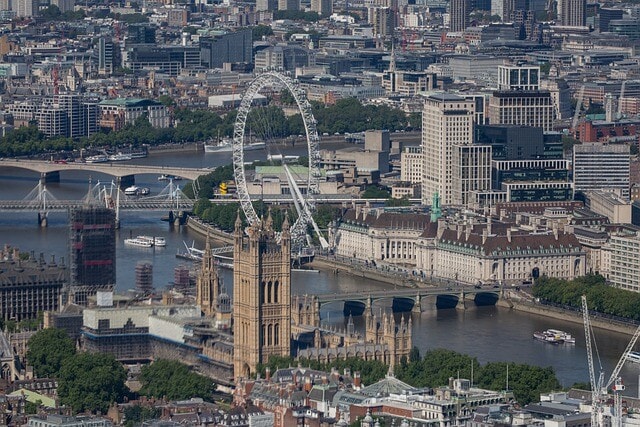
The last English symbol on our list is the London Eye, also called the Millennium Wheel, located on Southbank, London. It’s the largest observation wheel in the world and the most popular tourist attraction in the UK. The wheel has 32 capsules which symbolize the 32 boroughs of London. However, they’re numbered from 1 to 33, with the thirteenth carriage eliminated for good luck. Built for the millennium celebration, the wheel is now a permanent fixture on the skyline of London and remains one of the most modern symbols of the city today.
Wrapping Up
The United Kingdom is a large area, comprising of four distinct nations. Because of this, the symbols of the UK are diverse, reflecting the individual nature of each country. Together, they symbolize the long and rich history and cultural heritage of the UK.








